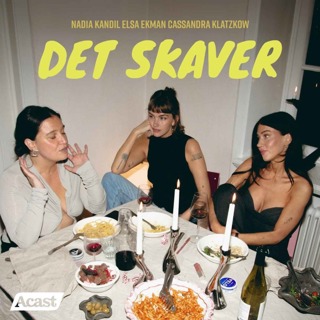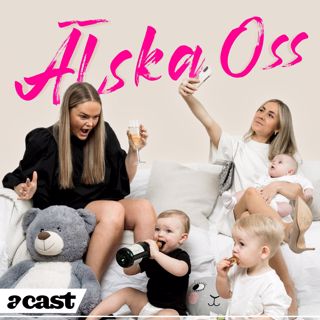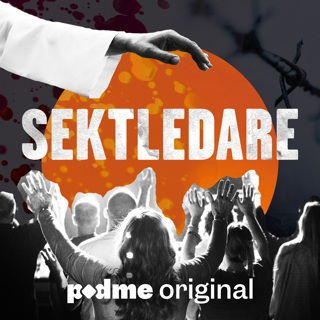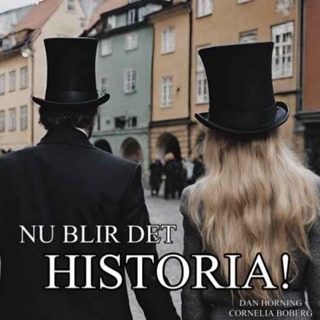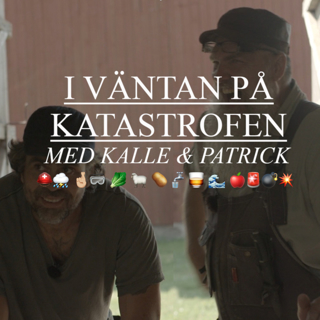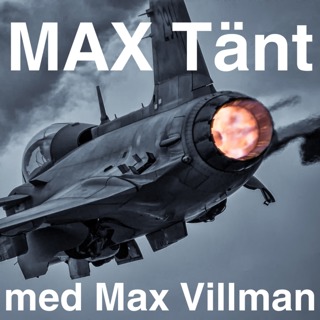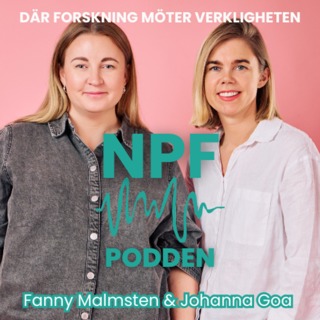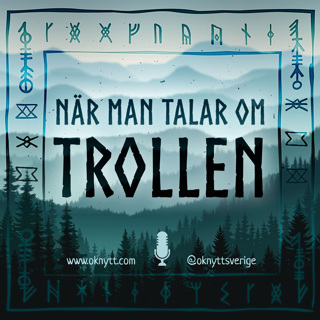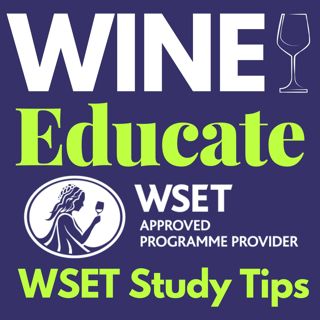
83. The Northern Rhône, Part 2: Saint-Joseph, Hermitage, Crozes-Hermitage & Cornas
The Northern Rhône, Part 2: Saint-Joseph, Hermitage, Crozes-Hermitage & Cornas Resources & Links 📬 Sign up for the newsletter: www.wineeducate.com/newsletter-signup 📧 Contact Joanne: joanne@wineeducate.com Episode Overview Hello, and welcome to the Wine Educate Podcast! This is Episode 83, and I'm your host, Joanne Close. Today we're continuing our Northern Rhône series and diving into the middle and southern parts of the Northern Rhône—covering Saint-Joseph, Hermitage, Crozes-Hermitage, and Cornas. It's late October here in New Orleans, and after a long hot stretch, it's finally cooling off just enough to think about sweaters—perfect weather to talk about Syrah and the Rhône Valley! Key Takeaways Saint-Joseph Stretches roughly 37 miles with diverse terrain and microclimates. Awarded AOC status in 1956 and is the second-largest appellation in the Northern Rhône (about 1,370 hectares). Produces predominantly red wines (84%) from Syrah, with some white blends of Marsanne and Roussanne. Though up to 10% white grapes can be co-fermented with Syrah, this is rarely practiced. Hermitage The historic "crown jewel" of the Northern Rhône—tiny, just 138 hectares, but world-renowned. Recognized as an AOC in 1936 and represents only 4% of Northern Rhône plantings. Known for its single hillside divided into 20 distinct areas called lieux-dits, many nicknamed "La-Las." Produces incredibly age-worthy Syrah wines (20–50 years) and remarkable white Marsanne–Roussanne blends that are among the longest-lived dry whites in the world. Stay tuned—Hermitage deserves its own full episode soon. Pro Tip: Don't overlook the white wines of the Northern Rhône! Marsanne and Roussanne blends are often beautifully complex and well-priced. Crozes-Hermitage The largest AOC in the Northern Rhône (est. 1937), accounting for about 41% of production. Surrounds Hermitage but covers a much wider range of terroirs, leading to variable quality. Mostly red wines (Syrah) with a small amount of whites. Technically can include up to 15% Marsanne and Roussanne, though in practice this is rarely done. A great region for excellent-value Rhône Syrah—ask your local wine shop for recommendations. Cornas AOC since 1938, and only 155 hectares—small but mighty. The name Cornas comes from the Celtic term for "burnt earth," referencing the south-facing granite slopes that trap heat and create a warm microclimate. Produces 100% Syrah—powerful, full-bodied reds that reflect their sun-drenched terroir. Locals call it an "island of the South in the North." Study Notes If you're studying for WSET Level 2 or 3, these regions build on one another: Remember that Syrah is the only permitted red grape in the Northern Rhône. Marsanne and Roussanne are the two key white grapes replacing Viognier as we move south. Co-fermentation is allowed in several appellations but rarely practiced today. Wine Educate Updates I'm currently working on a WSET Level 3 Membership, which will include deeper dives into specific appellations and winemaking techniques—Hermitage will definitely be featured! If you're interested, make sure you're on the newsletter list. If you've had trouble signing up, just email me directly at joanne@wineeducate.com—I respond personally. Closing Thoughts We've now wrapped up the Northern Rhône. Yes, there are a few tiny AOCs we didn't cover, but those aren't emphasized in the WSET Level 2 or 3 materials. The goal here is to add texture and depth to your study, helping you understand the context behind the textbook facts without getting lost in the weeds. As we head into Halloween weekend, enjoy the cooler weather and maybe open a bottle of Rhône Syrah. My daughter is dressing up as the evil Tooth Fairy, and I'll be crafting about a hundred bloody teeth—so wish me luck! Next week, we head south to explore the Southern Rhône. Happy studying, and cheers until next time!
30 Okt 11min

82. The Wines of the Northern Rhône: Côte-Rôtie, Condrieu & Château-Grillet
Wine Educate Podcast: Episode 82 Title: The Wines of the Northern Rhône: Côte-Rôtie, Condrieu & Château-Grillet Resources & Links Sign up for the Wine Educate Newsletter https://www.wineeducate.com/newsletter-signup Upcoming WSET Classes www.wineeducate.com Episode Overview In Episode 82, Joanne explores the northernmost part of the Northern Rhône, home to some of France's most prestigious Syrah and Viognier wines. This is the first of a two-part look at the region, focusing on three key appellations: Côte-Rôtie, Condrieu, and Château-Grillet. Building on last week's episode about the Mistral wind and Rhône overview, Joanne dives deeper into the geography, climate, and grape varieties that make this steep, narrow valley so remarkable. With vineyards carved into slopes as steep as 60%, the Northern Rhône is a place where ancient Roman terraces meet modern winemaking excellence. What You'll Learn Why the Northern Rhône is the northernmost region where Syrah can successfully ripen How the steep slopes and river reflections shape the wines' intensity and style The fascinating story of how this region was nearly lost to history and later revived What makes Côte-Rôtie ("the roasted slope") one of France's most elegant Syrah-producing areas How Viognier is co-fermented with Syrah to stabilize color and enhance aromatics Why Condrieu is considered the birthplace of Viognier—and how it returned from near extinction The rarity of Château-Grillet, one of only two monopole appellations in France Episode Highlights Côte-Rôtie produces deeply colored, full-bodied Syrah wines with floral lift and spice. Co-fermentation with Viognier (up to 20%, though rarely that high) adds perfume and elegance. Condrieu focuses exclusively on Viognier, producing rich, full-bodied wines with aromas of blossom, apricot, and stone fruit. Château-Grillet, a 3.5-hectare monopole owned by Château Latour, sits in an amphitheater of granite that shelters its vines from the cold north winds. Key Takeaway The Northern Rhône may be small—just 5% of Rhône production—but it produces some of the most distinctive and age-worthy wines in the world. Its combination of steep slopes, ancient terraces, and mastery of Syrah and Viognier makes it one of the most compelling study regions for WSET students. How to Contact Us Questions about WSET classes or trips? Email Joanne at joanne@wineeducate.com Visit www.wineeducate.com for class listings, resources, and upcoming trips.
23 Okt 8min

81. Rhône Overview and the Mistral Wind Explained
Wine Educate Newsletter — Your Weekly Wine Study Boost! If you are studying wine or just love learning, this is your home base for smart, friendly study help. I keep it clear, useful, and welcoming so you actually look forward to it. Each Tuesday you'll get Level 2 multiple choice questions you can answer in minutes Level 3 essay prompts with simple pointers on where to aim Class news, events, and trip updates Short quizzes and tasting tips to keep skills sharp Join us here: www.wineeducate.com/newsletter-signup Episode 81 — Rhône Overview and the Mistral Wind Explained Host: Joanne Close Focus: A clear overview of the Rhône and a practical explainer on the Mistral wind. This is a Level 3 essential that often appears on exams, and a helpful frame for Level 2 students before you study North and South separately. What we cover Where the Rhône sits From just south of Lyon down to the borders with Languedoc and Provence Pre-Alps to the east, Massif Central to the west Latitude 44–45, similar to Oregon's Willamette Valley Production snapshot About 75% red, 16% rosé, 9% white Roughly 95% of total volume comes from the Southern Rhône Appellations you will see Côtes du Rhône AOC (1937) applies across North and South, used mostly in the South Côtes du Rhône Villages AOC (1960) applies only in the South, with 95 named villages North vs South Different grapes, climate, soils, and training systems Unified by the Rhône River and the Mistral The Mistral, simply explained What it is A cold, dry north wind driven by pressure differences that accelerates down the valley How strong it can get Often 30–45 mph, gusts can exceed 60 mph Recorded at 72 mph on April 6, 2003, just below Category 1 hurricane strength When it shows up Most common in winter and early spring Often arrives with clear blue skies because the air is very dry Why it helps and hurts Helps: dries leaves and bunches, lowers disease pressure, supports organic viticulture Hurts: can shatter flowers at fruit set and reduce yields, can break shoots or damage vines How growers adapt Northern Rhône Choose sites in lateral valleys to reduce exposure Steep, terraced, south to southeast aspects for heat and light Individual stakes or teepee stakes to anchor Syrah against the wind Southern Rhône Fewer natural wind breaks, so plant windbreaks and use careful trellising Grenache is bush trained low to the ground for protection and soil warmth Syrah is more wind sensitive and benefits from strong trellis support WSET study angle Level 3: be ready to explain the Mistral's cause, timing, benefits, risks, and the training choices that respond to it. Know where Côtes du Rhône and Côtes du Rhône Villages fit on labels. Level 2: use this overview to organize your thinking before studying the Northern and Southern Rhône in detail. Coming next A focused episode on the Northern Rhône A focused episode on the Southern Rhône Newsletter extras for all levels, including a Level 3 essay prompt and Level 2 quizzes for both North and South Wine Educate Newsletter — Your Weekly Wine Study Boost! If you are studying wine or just love learning, this is your home base for smart, friendly study help. I keep it clear, useful, and welcoming so you actually look forward to it. Each Tuesday you'll get Level 2 multiple choice questions you can answer in minutes Level 3 essay prompts with simple pointers on where to aim Class news, events, and trip updates Short quizzes and tasting tips to keep skills sharp Join us here: www.wineeducate.com/newsletter-signup
16 Okt 10min

80. Provence, France's Rosé Powerhouse: Regions, Grapes, and Styles
Links and resources Newsletter sign up for weekly quizzes and class news: www.wineeducate.com/newsletter-signup Information on upcoming trips and classes www.wineeducate.com What this episode covers Provence is more than postcards and pale pink wine. In this episode, Joanne unpacks the landscape, climate, history, grapes, and key appellations that define Provence today. You will hear how a region famous for rosé has invested in research, navigates fierce winds, and still makes serious reds and characterful whites along a very glamorous coastline. Quick highlights Provence produces about 90% rosé. Classic style is very pale, light to medium bodied, dry, with delicate red fruit. History matters: viticulture since 600 BCE, recovery after phylloxera aided by the railroad, and a long tradition of rosé. Climate: Mediterranean, about 3,000 hours of sun and roughly 27 inches of rain per year, most in winter. The Mistral lowers disease pressure and supports organic viticulture. Research: Home to the Centre du Rosé, which also studies climate adaptation, grape choices, and harvest strategies. Grapes: Grenache (~38%), Cinsault (~19%), Syrah (~16%) lead. Old-vine Carignan and Mourvèdre contribute to reds and structured rosé. Whites often feature Rolle (Vermentino) and Clairette. Style spectrum: Fresh, delicate rosé to age-worthy "Grand Rosé" or "Rosé à conserver." Reds range from fruity to full-bodied and barrel matured. Characterful coastal whites. Design and market: Proprietary bottle shapes and high tourism visibility. Celebrity and luxury ownership have raised the profile. Key appellations Côtes de Provence AOC Founded 1977. About 20,100 ha planted. Roughly 72% of Provence production. About 91% rosé. Rosé primarily from Cinsault and Grenache. Up to 20% white grapes allowed in rosé blends. Whites include Clairette, Sémillon, Ugni Blanc, and Rolle. Three coastal pockets Bandol AOC: South-facing terraced slopes that capture heat. Mourvèdre thrives. Premium reds are dark, full-bodied, powerful in tannin. Minimum 18 months in oak. Best with a few years of bottle age. Distinctive rosé and some whites are also produced. Cassis AOC: First AOC here (1936). Striking terraces above the sea. Known for characterful whites and elegant rosé. Bellet AOC: Small enclave near Nice with mineral-driven wines. IGP Méditerranée Shared with parts of the Rhône and Corsica. Allows flexible blending and wider sourcing for styles outside strict AOC frameworks. Links and resources Newsletter sign up for weekly quizzes and class news: www.wineeducate.com/newsletter-signup Information on upcoming trips and classes www.wineeducate.com
9 Okt 14min

79. Roussillon Wines Explained: Grapes, History and Travel Insights
Resources & Links Sign up for the newsletter: www.wineeducate.com/newsletter-signup Learn more about Wine Educate trips and sign up for the upcoming Zoom info session: www.wineeducate.com/trips Episode Overview Welcome back to the Wine Educate Podcast! In this episode, Joanne Close takes us into the wines of the Roussillon, a region often described as "rugged" and one of the sunniest in France. Surrounded on three sides by mountains and on the fourth by the Mediterranean, Roussillon has a unique climate, rich cultural identity, and a fascinating wine history that sets it apart from its neighbor, the Languedoc. Joanne shares travel tips for visiting the region, explains its dual Catalan and Occitan heritage, and describes how the challenging but rewarding landscape has shaped the vineyards and the wines. From still wines to fortified Vin Doux Naturel, Roussillon offers styles that reflect both tradition and innovation, and Joanne highlights the winemakers who are helping this region find new energy today. What You'll Learn in This Episode Why the Roussillon is one of France's driest and sunniest regions, and how its eight named winds affect viticulture. How the region's diverse soils and elevations create different opportunities for grape growing. The importance of Grenache, Syrah, Carignan, and Mourvèdre in red blends, and the key white grapes you'll find here. The history and current role of Vin Doux Naturel, once a global favorite and still central to Roussillon's identity. The rise of small producers and the natural wine movement in this region of old vines and inexpensive land. Why the town of Collioure remains a highlight, from its anchovies to its impressionist art history. How to Join Us on a Trip If you are curious about experiencing the South of France firsthand, Joanne and the Wine Educate team are hosting a Zoom info session on Wednesday, October 15th at 12:00 pm Central. Learn more and sign up here: www.wineeducate.com/trips
2 Okt 15min

78. Languedoc Wines Explained: PDO vs IGP and Why Languedoc Is France's Most Underrated Wine Destination
Resources & Links If you have questions about our upcoming trips to The South of France, we are hosting a Zoom info session on October 15th. Get the Zoom link here: www.wineeducate.com/trips If you want to learn more about our upcoming trips, visit: www.wineeducate.com/trips To receive study tips, quizzes, and information on upcoming classes, sign up for our newsletter: www.wineeducate.com/newsletter Hello friend, and welcome to Episode 78 of the Wine Educate podcast! I'm your host, Joanne Close, and today we're diving into the Languedoc, a region that is near and dear to my heart. As some of you know, my parents bought a vineyard here 25 years ago, so this has been my summer stomping ground for decades. Now that I'm running wine trips, I get even more excuses to visit—not just my parents, but also this extraordinary, and often underrated, corner of France. I've had some of the best meals and most memorable bottles of wine in the Languedoc, and I can't wait to share its story with you. What You'll Learn in This Episode Why Jancis Robinson calls Languedoc "France's best value." The history behind the name "Languedoc" and its three central departments: Aude, Hérault, and Gard. How the Languedoc evolved from producing France's bulk wines to becoming home to exciting AOCs. The importance of IGP wines here (60% of France's IGP wines come from this region!). The role of wind, sunshine, and climate in shaping viticulture. Key appellations and sub-appellations you should know for your wine studies. Signature grape varieties and styles—from bold reds to refreshing Picpoul de Pinet and sparkling wines of Limoux. Personal stories from my family's vineyard and why this region continues to inspire me. Why This Matters The Languedoc is literally watching itself reinvent and redefine quality. It's vast, diverse, and still evolving, which makes it both exciting to study and rewarding to drink from. Whether you're studying for WSET or just looking for amazing value wines, the Languedoc has something for you. Resources & Links If you have questions about our upcoming trips to The South of France, we are hosting a Zoom info session on October 15th. Get the Zoom link here: www.wineeducate.com/trips If you want to learn more about our upcoming trips, visit: www.wineeducate.com/trips To receive study tips, quizzes, and information on upcoming classes, sign up for our newsletter: www.wineeducate.com/newsletter-signup
25 Sep 9min

77. Super Tuscans 101: Tuscany's Bordeaux Blends and the Sassicaia Story
Description: In Episode 77 of the Wine Educate Podcast, Joanne Close explores the fascinating rise of Super Tuscans—wines that broke Italy's traditional rules and became some of the most sought-after bottles in the world. In Tuesday's episode, we covered Chianti and Chianti Classico. Today, we're heading about 75 miles southwest to Bolgheri, the coastal home of Super Tuscans. Though close in distance, Chianti and Bolgheri couldn't be more different in climate, grape varieties, and wine styles. We'll dive into: What makes a wine a "Super Tuscan" (hint: it's all about those Bordeaux grapes and French barriques) Why the end of Tuscany's sharecropping system in the 1950s–60s led to a decline in wine quality How new investors and open-minded winemakers planted Cabernet Sauvignon, Merlot, and Syrah The origin story of Sassicaia, the trailblazing wine that inspired a movement The creation of Bolgheri DOC in 1983, its evolution in 1994, and the unique 2013 Sassicaia DOC—Italy's only single-estate DOC How Bolgheri grew from 250 hectares in the late 1990s to nearly 1,200 hectares today with 60 producers Why Super Tuscans remain some of the most iconic and expensive wines in Italy Episode Highlights: The contrast between Chianti Classico's high-altitude Sangiovese and Bolgheri's plush Bordeaux blends The story of Sassicaia and why it's so special The evolution from "vino da tavola" to prestigious DOC status Current pricing and collector appeal of Super Tuscans Perfect for: WSET students looking to sharpen Level 3 knowledge Italian wine enthusiasts curious about more than Chianti Collectors and wine lovers who want to understand the Super Tuscan legacy 👉 Want to test your knowledge? I'm adding new wine quizzes in the Wine Educate Newsletter. Sign up at wineeducate.com
18 Sep 9min

76, Chianti vs. Chianti Classico: History, Laws, and Key Differences Explained
Hello and welcome back to the Wine Educate Podcast. I'm your host, Joanne Close, and this is episode 76. Today we're diving into the history and wine laws of Chianti and Chianti Classico. This is a Level 3 topic, but I've added context and stories that bring the region to life. Chianti has one of the longest and most fascinating histories in Italian wine. As early as the 13th century, the region was known as "Chianti," and in 1716, Grand Duke Cosimo III of Tuscany officially delineated the boundaries of what is essentially Chianti Classico today. This was done to protect quality and combat fraud, making Chianti one of the first wine regions in the world to be legally defined. In 1924, the Consortium for the Defense of Chianti Wine was founded, beginning with just 33 producers and symbolized by the black rooster, the Gallo Nero. Today, it represents nearly 500 producers and continues to defend the reputation of Chianti Classico, often clashing with government decisions and proposals from the broader Chianti DOCG. We'll explore the differences between the two appellations: Chianti DOCG (DOC status in 1967, DOCG in 1984): A broad region divided into seven subzones, requiring only 70% Sangiovese in the blend and allowing higher yields. Quality can vary widely, though subzones like Chianti Rufina and Colli Senesi stand out. Chianti Classico DOCG (its own DOCG since 1996): The historic heartland, with vineyards at higher altitudes that produce wines of greater acidity, structure, and elegance. Rules require at least 80% Sangiovese (often 100%), with defined aging requirements: 12 months for Classico, 24 months plus 3 in bottle for Riserva, and 30 months for Gran Selezione, which must come from a single estate. We'll also talk about the introduction of UGAs (subzones within Chianti Classico) in 2021, the consortium's ongoing battles with Chianti DOCG over labeling, and why this region's story is full of both drama and determination. If you'd like to test your knowledge, sign up for the Wine Educate newsletter at wineeducate.com
16 Sep 10min



